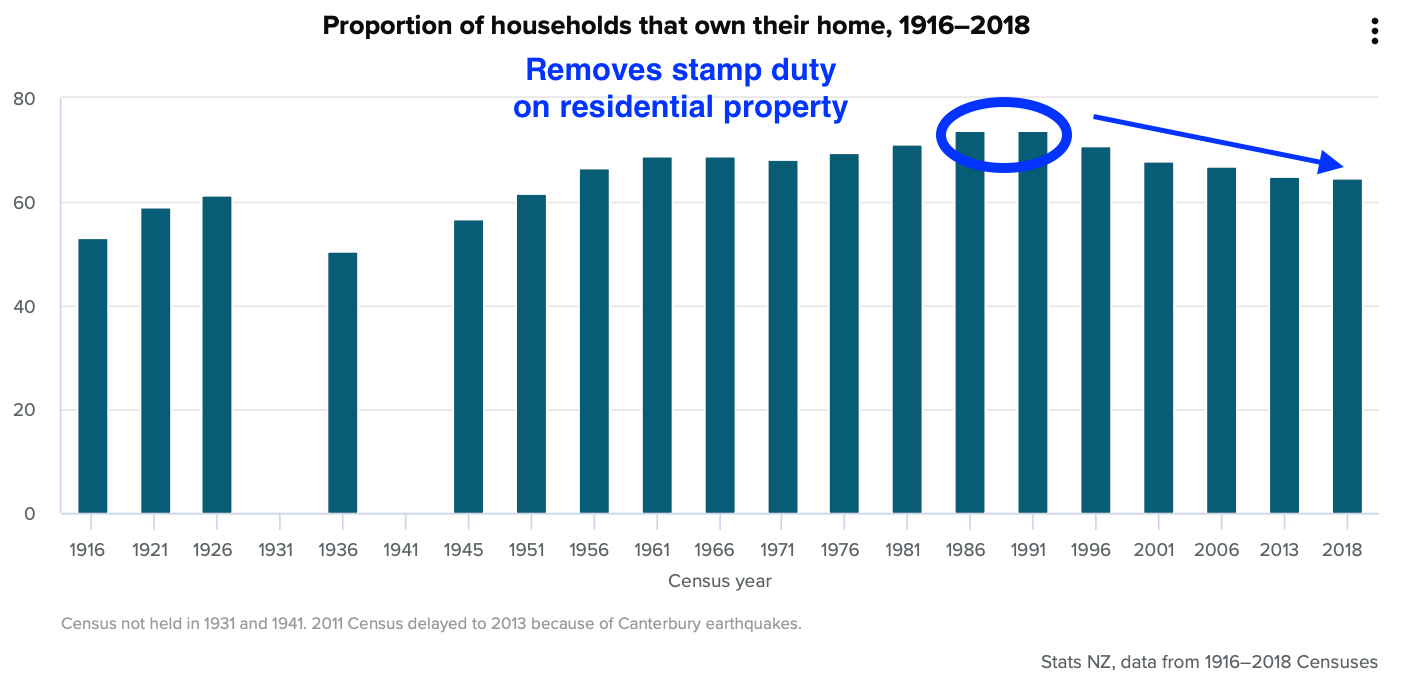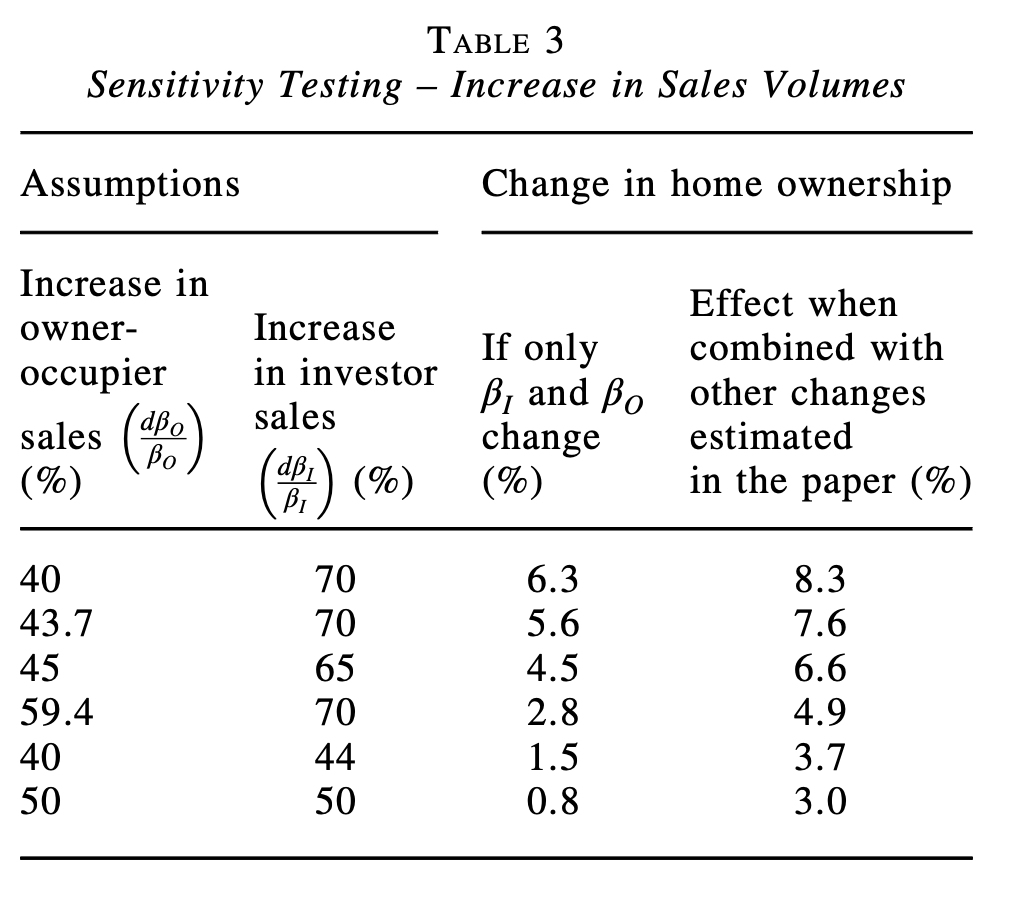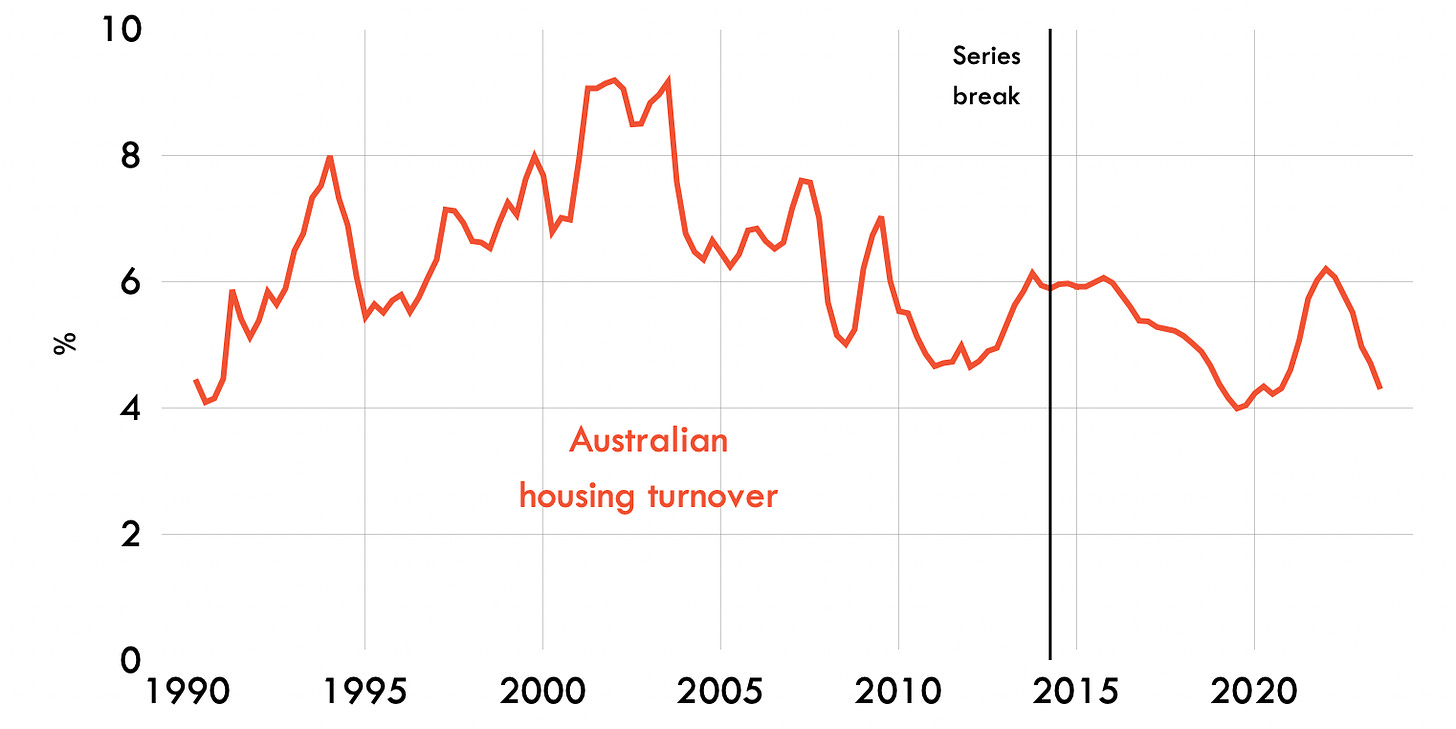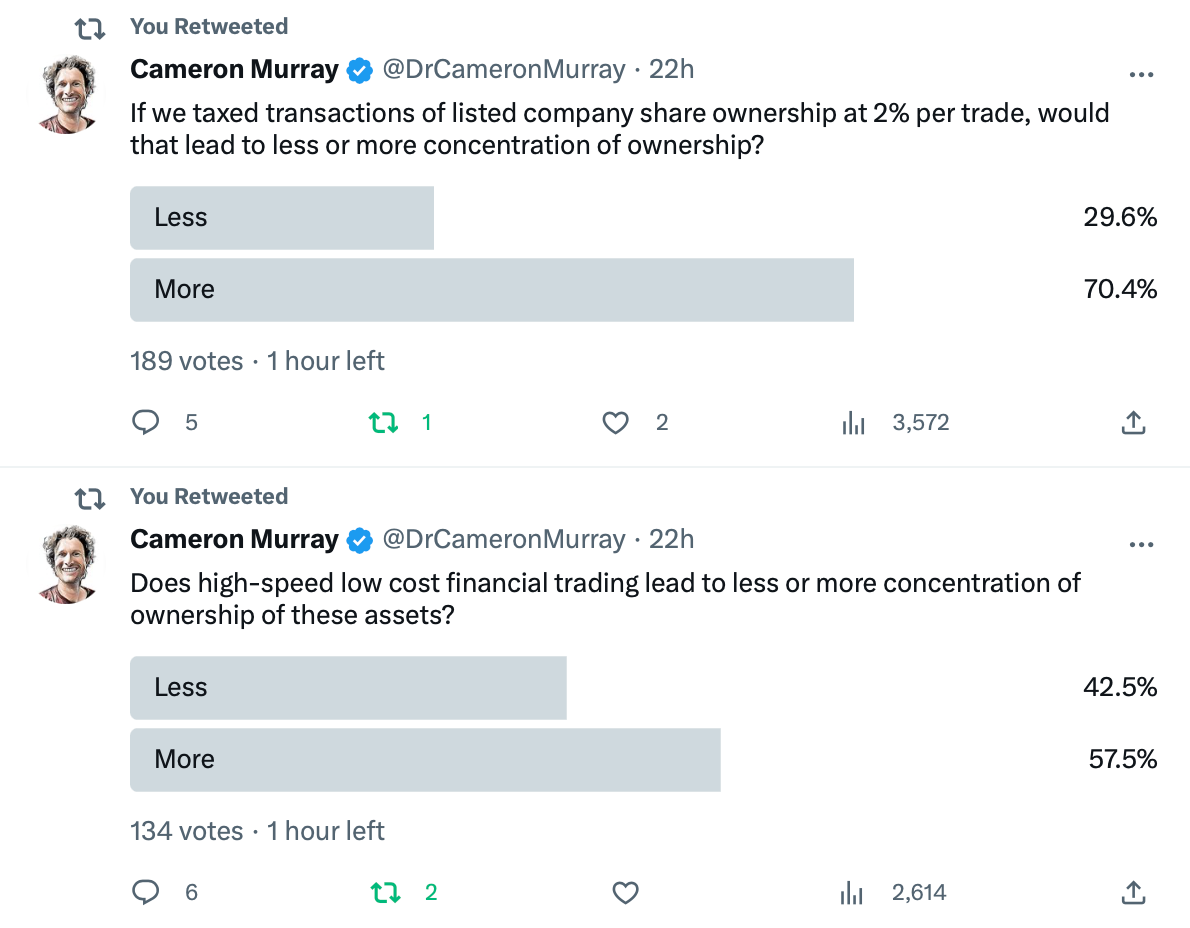Stamp responsibility is a state tax on property transactions levied at a number of p.c of the worth of the commerce, with larger charges making use of to higher-value trades.
One of the widespread tax reforms in Australia is to take away stamp responsibility and enact a broader land worth tax, which is an annual tax levied on the assessed land worth for every property, traded or not. It’s often utilized at a charge of 1-2% of the land worth.
Many miracles are supposed to come up from this tax swap, from extra family relocations to cheaper housing and higher financial effectivity.
However these claims are largely based mostly on hope, not proof. I’ve debunked the principle claims in these two articles.
The most recent miracle claimed to come up from eradicating stamp responsibility is that it’s going to improve dwelling possession.
A new paper within the Financial Report received some press protection for its claims about how a lot eradicating stamp responsibility may improve dwelling possession. The financial and political tribes fell predictably into line behind it on social media.
The primary results of the paper was as follows:
The NSW authorities’s 2020 proposal to exchange stamp responsibility on all properties with an annual tax based mostly on unimproved land values is estimated to extend dwelling possession by 6.6%, by way of modifications in purchaser holding intervals, a shift of tax burden from buyers to owner-occupiers and a relaxed deposit constraint.
By way of dwelling possession charges:
General, the modelling suggests dwelling possession may improve in the long term from 67.1% of the non-public dwelling inventory to 71.5%, which is a 6.6% improve.
How is the New Zealand miracle going?
In 1988, New Zealand eliminated stamp duties from residential property trades, and in 1999 eliminated them from all property trades.
The result is that dwelling possession there’s now the bottom it’s been in 70 years.
The chart beneath from Stats NZ exhibits a fall within the dwelling possession charge from 73.8% in 1991 to 64.5% at the moment, which is a a lot larger drop than Australia has seen in latest a long time with its cumbersome stamp duties.

A miracle within the mannequin
The brand new paper is predicated on a modelling train that assumes that rising turnover will result in the next proportion of first-home consumers.
It’s not a nasty paper. It exhibits the sensitivity of the outcomes to varied assumptions, the important ones being how a lot additional turnover comes from buyers or dwelling house owners promoting (that are inputs to the mannequin, not outputs).

However I believe there are some unusual assumptions.
For instance, in a pure dwelling possession market with no investor consumers and no change within the inventory of housing or variety of households, altering the frequency of trades wouldn’t change the house possession charge — it is going to all the time be 100%.
If stamp responsibility reduces the price of buying and selling, there will probably be extra buying and selling. However each vendor can also be a purchaser, even at larger ranges of turnover. If there are 5 sellers, which means there are precisely 5 consumers. If there are 10 sellers, there are precisely 10 consumers as properly.
Altering the frequency of commerce doesn’t change this elementary relationship. Provided that buyers promote comparatively extra can larger turnover result in larger dwelling possession. As we are able to see within the picture above, that is precisely the belief that generates the results of larger turnover resulting in larger dwelling possession.
The forgotten compelled renter strikes
Additionally it is bizarre to me that stamp responsibility is now usually relabelled as a shifting tax.
However stamp responsibility additionally taxes housing trades between buyers, which often power renter households to maneuver once they don’t wish to.
Stamp responsibility taxes turnover, which isn’t the identical factor as mobility.
New Zealand has a housing turnover charge of about 7-9% per 12 months, whereas Australia has a charge of about 4-6%. A large distinction, most probably as a result of low transaction prices there.

However that additionally signifies that renters in New Zealand are more likely to be compelled to maneuver due to a house sale.
In Australia, surveys recommend that about 14% of renter strikes are as a result of a lease was not renewed for any cause. However in New Zealand, a survey of over 1,000 tenants in 2016 discovered that 30% of renter strikes have been as a result of the landlords offered the home, with this being the rationale behind 36% of renter strikes in Auckland.
New Zealand Treasury has famous the features to renters from fewer property transactions.
In Auckland, lowering the turnover of rental properties is probably going fascinating to extend tenants’ stability of tenure. As famous above, Auckland’s short-term housing market turnover is excessive, with homes with highest ranges of brief time period turnover concentrated in areas with comparatively massive investor participation.
Decreasing the price of transacting by eradicating stamp responsibility is more likely to have a a lot bigger impact on the speed of transactions of landlords in comparison with dwelling house owners.
We all know that individuals don’t purchase costly homes with the expectation of steadily promoting and shifting. Households select to hire as a substitute in the event that they don’t plan to remain in a single place. Positive, they do that partly due to stamp responsibility, however these behavioural responses additionally lower the impact of stamp responsibility on lowering mobility.
In truth, 30% of renters within the Australian Bureau of Statistics housing mobility survey say that the prices related to shifting are why they wouldn’t transfer, however solely 21% of homeowners say prices are a barrier to shifting.
Much less frequent trades enhance stability
I ran two Twitter polls. One about whether or not including prices to buying and selling property leads to much less or extra concentrated possession and one about eradicating prices.
Most individuals thought that each including and eradicating prices to asset buying and selling elevated focus of possession.
Primarily, all of us suppose any change is dangerous.

Let’s carry these threads collectively.
A brand new research reckons that eradicating stamp responsibility will improve dwelling possession by an astonishing 6%, reversing a half-century of decline. This appears a daring declare since the very best real-life case research is New Zealand, and residential possession there declined after stamp responsibility was eliminated.
It seems that the daring declare is predicated on the belief that larger turnover means extra buyers promoting and fewer homebuyers promoting. The research assumed its outcome.
Certainly, decrease turnover is mostly good for renters. Extra buyers promoting means extra compelled and pointless renter strikes, which is an enormous downside in New Zealand.
And after we ask individuals whether or not larger prices of buying and selling means larger focus of possession (i.e. extra investor house owners proudly owning extra houses every, relatively than broader dwelling possession) individuals do not know.
That is republished with permission from Cameron Murray’s Recent Financial Pondering Substack.




